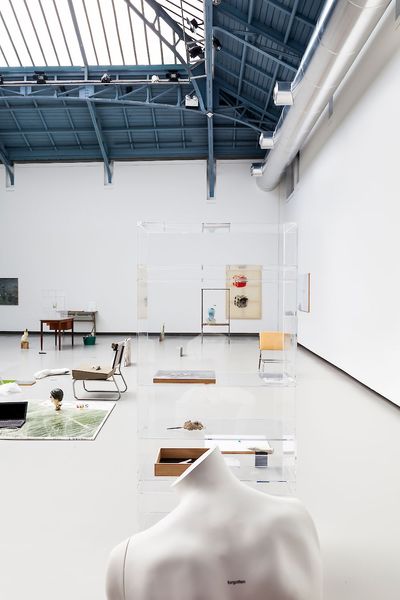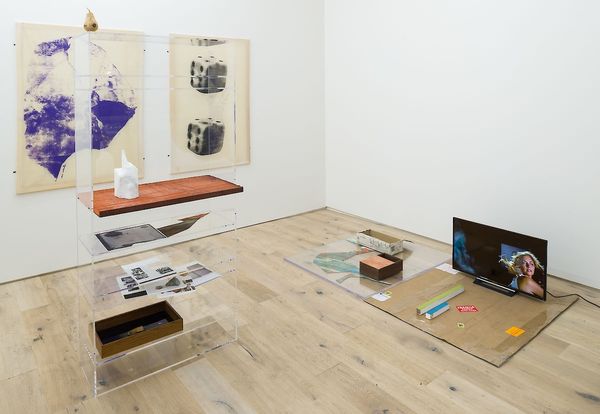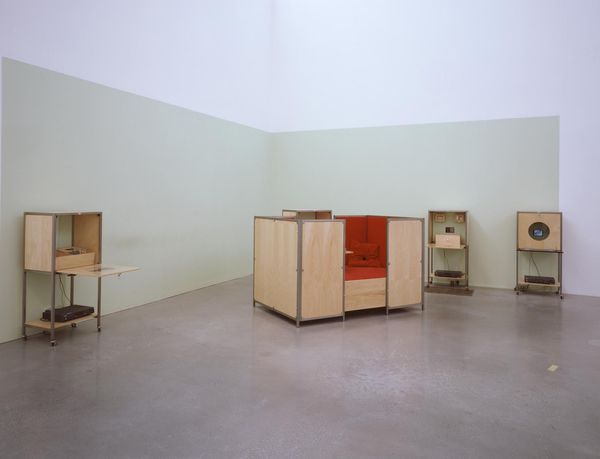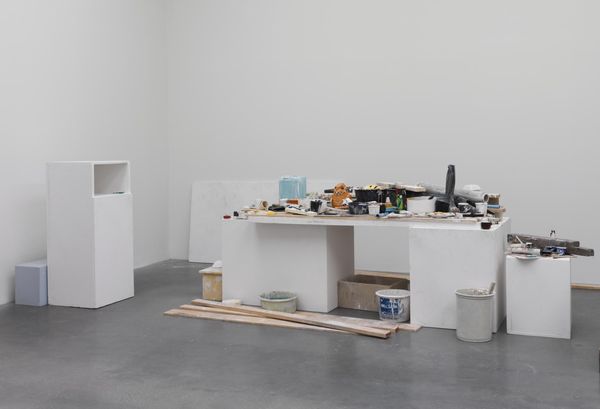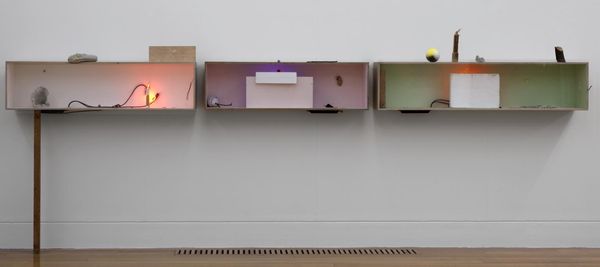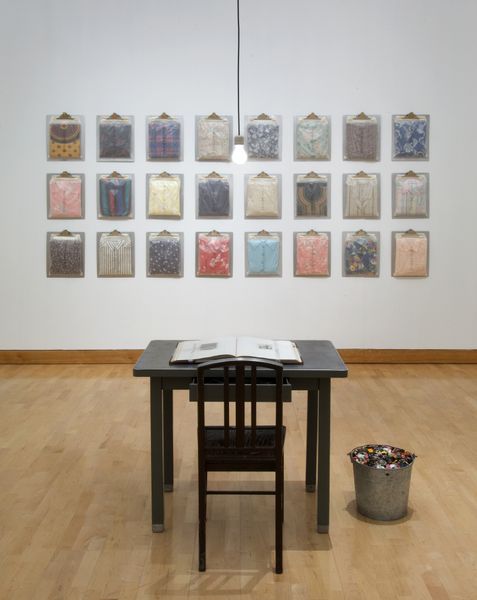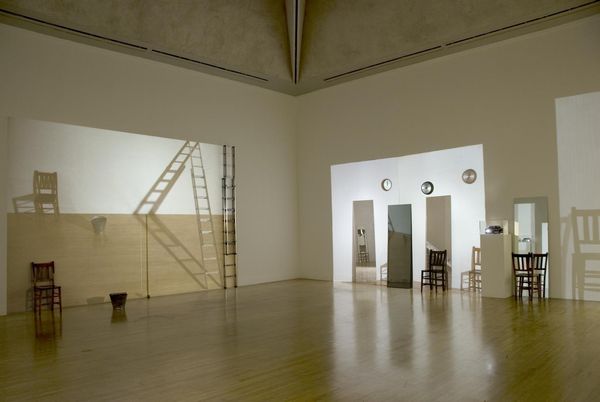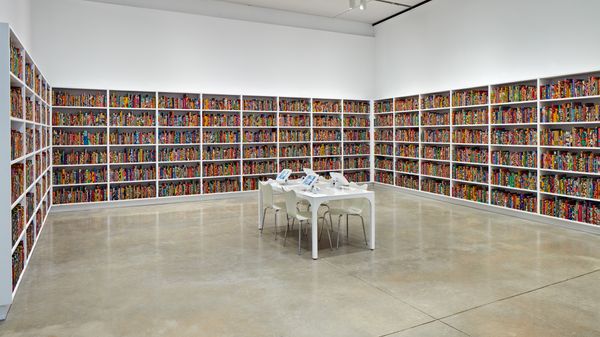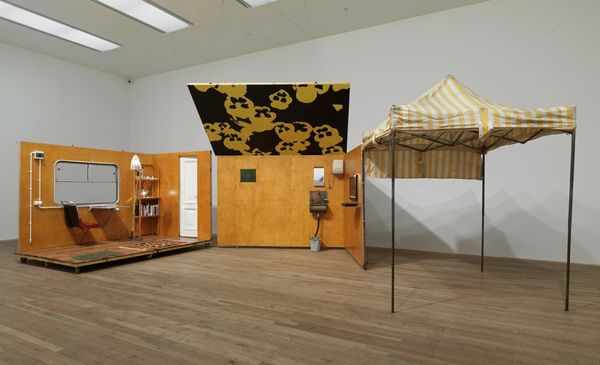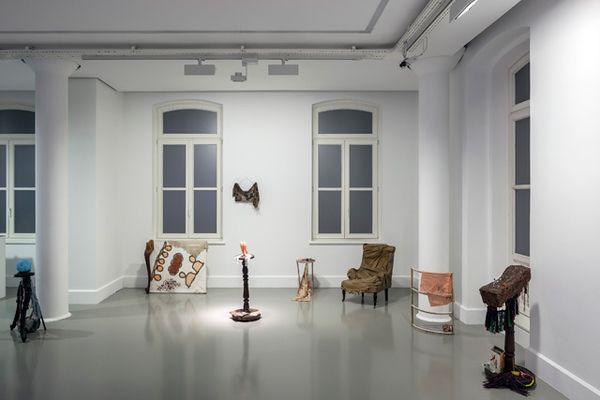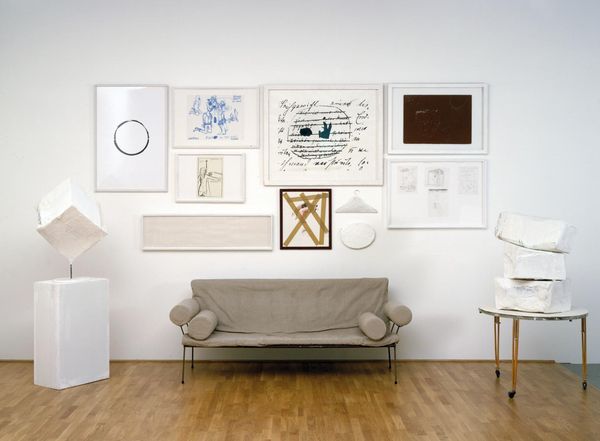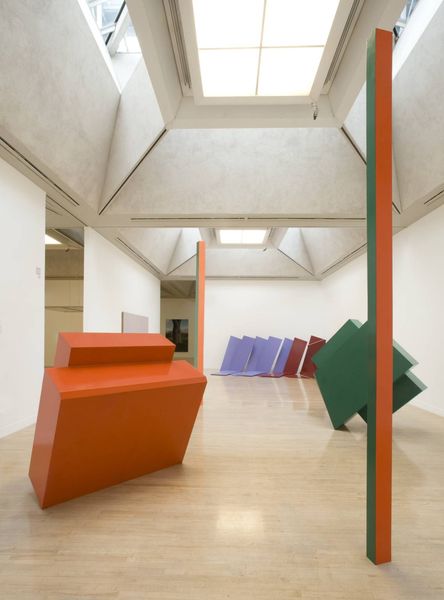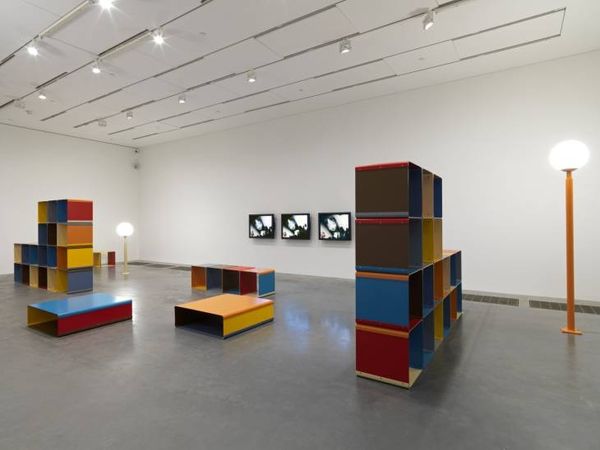
Dimensions: Overall display dimensions variable
Copyright: © Damien Hirst and Science Ltd. | CC-BY-NC-ND 4.0 DEED, Photo: Tate
Editor: Right, so this is Damien Hirst's "Pharmacy," a kind of installation piece. It's, well, literally a pharmacy...or a recreation of one. The sheer scale of it is overwhelming. What is your take on this piece? Curator: It's a fascinating paradox, isn't it? Hirst presents us with this sterile, clinical environment, a temple to modern medicine, yet it feels strangely… unsettling. Like a beautiful mausoleum, perhaps? Are we meant to find solace or be confronted with our mortality? Editor: I guess it's a bit of both. It does make you question our reliance on medicine to live longer... Curator: Exactly! And the colorful pills, lined up like tiny soldiers, promise health and longevity, but also hint at the fragility of life. It's a powerful statement, sugar-coated with a dose of dark humor, don't you think? Editor: Yes, I see it now. It's so much more than just pills on shelves. Curator: It's a memento mori for the modern age.
Comments
Join the conversation
Join millions of artists and users on Artera today and experience the ultimate creative platform.
tate 7 months ago
⋮
This work is a room-sized installation representing a pharmacy. It was conceived as a site-specific installation and initially shown at the Cohen Gallery, New York, in 1992. Hirst had been using glass-fronted cabinets of the type found in a laboratory or hospital, stacked with pharmaceutical drugs as well as other objects, since 1989. In these works (but not in Pharmacy) he arranged the drugs on the shelves so that they offer a model of the body: those at the top are medicines for the head; in the middle are medications for the stomach; those at the bottom treat ailments of the feet. These works are related to his famous ‘spot’ paintings, which bear the names of pharmaceuticals as their titles. Hirst’s spot paintings and pharmaceutical works recall an early work by Marcel Duchamp (1887–1968) also titled Pharmacy (1914). One of Duchamp’s first ready-mades, this is a commercial print of a winter landscape signed by an unknown artist onto which Duchamp painted two small drops of colour (red and yellow) suggesting personages, which for him represented the coloured apothecary bottles generally seen in pharmacy windows at that time. T07187, like all Hirst’s smaller medicine cabinet works, also recalls the series of Pharmacies created by Joseph Cornell (1903–72) during the 1940s and 1950s. These comprise such poetic fragments as leaves, feathers, shells, papers, mineral and wood samples, coloured liquids and powders assembled in rows of glass bottles lined up on the shelves of old wooden medicine chests. Two of these dating from 1943, both Untitled (Pharmacy) (reproduced in Diane Waldman, Joseph Cornell: Master of Dreams, New York 2002, pp.52–3), feature rows of identical bottles partitioned with glass shelving that runs vertically as well as horizontally, forming a grid – the structure that orders Hirst’s spot paintings and such works as Life Without You 1991 (T12749) and the Untitled print from London 1992, P77930.
